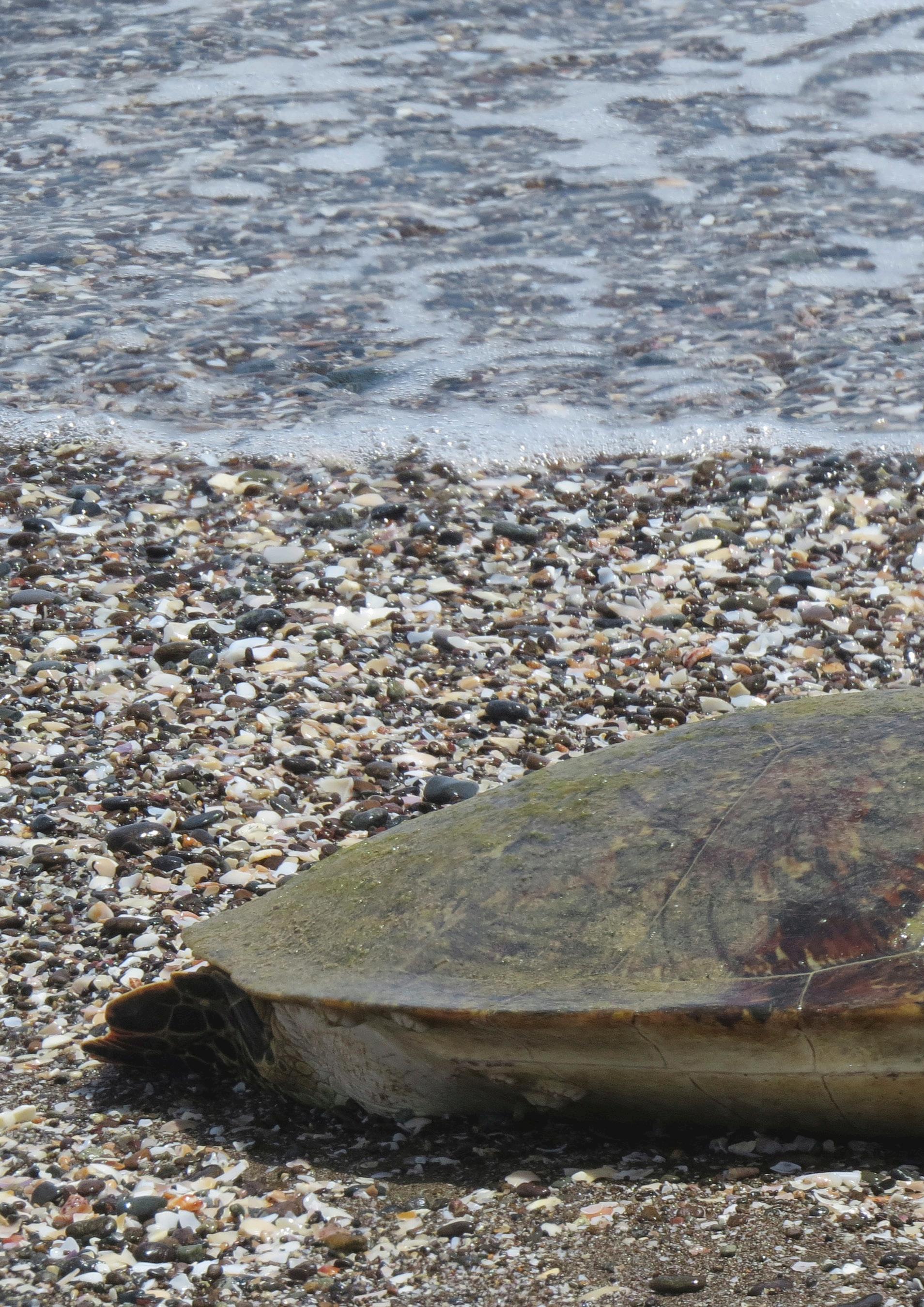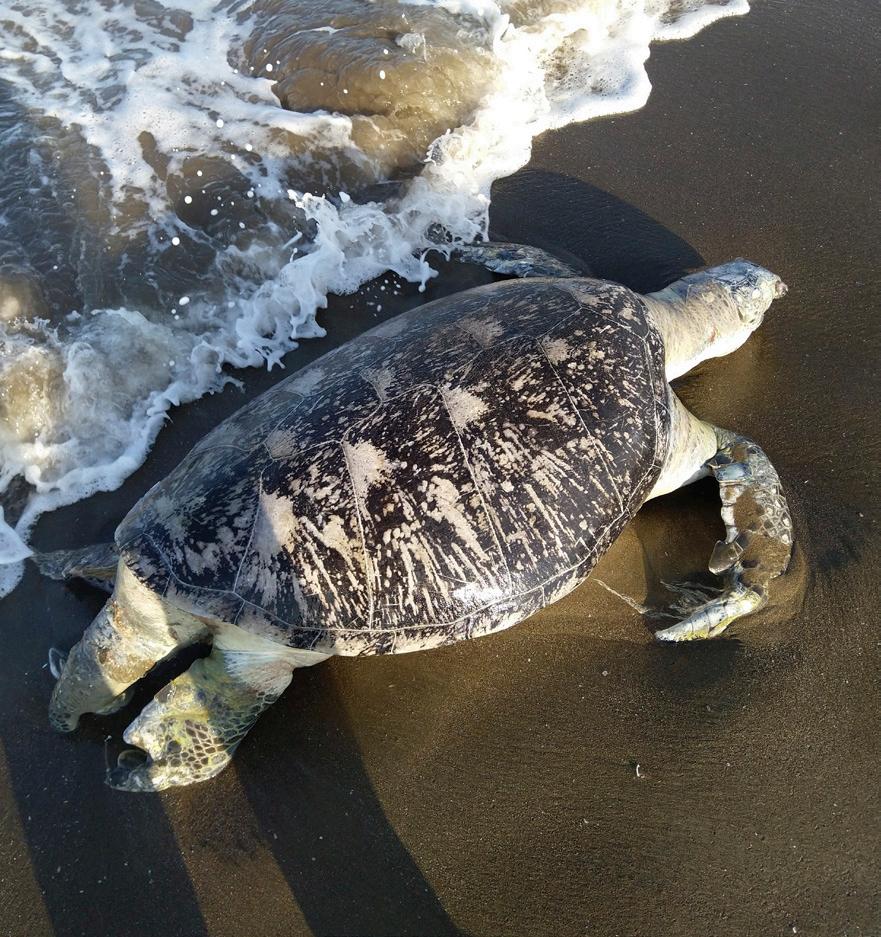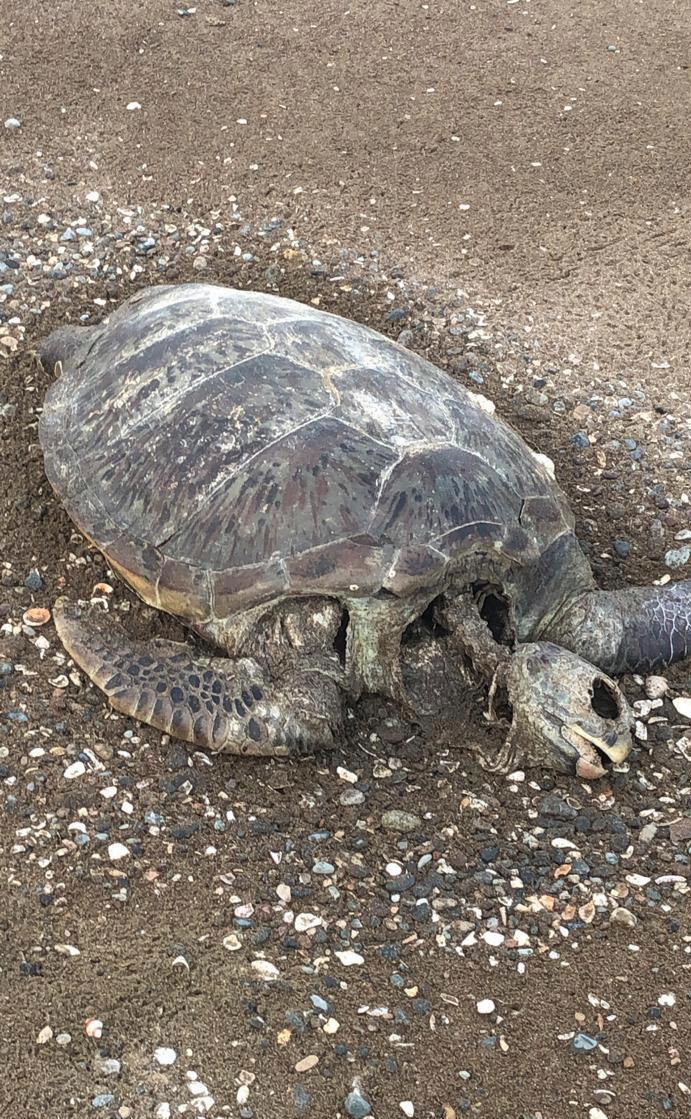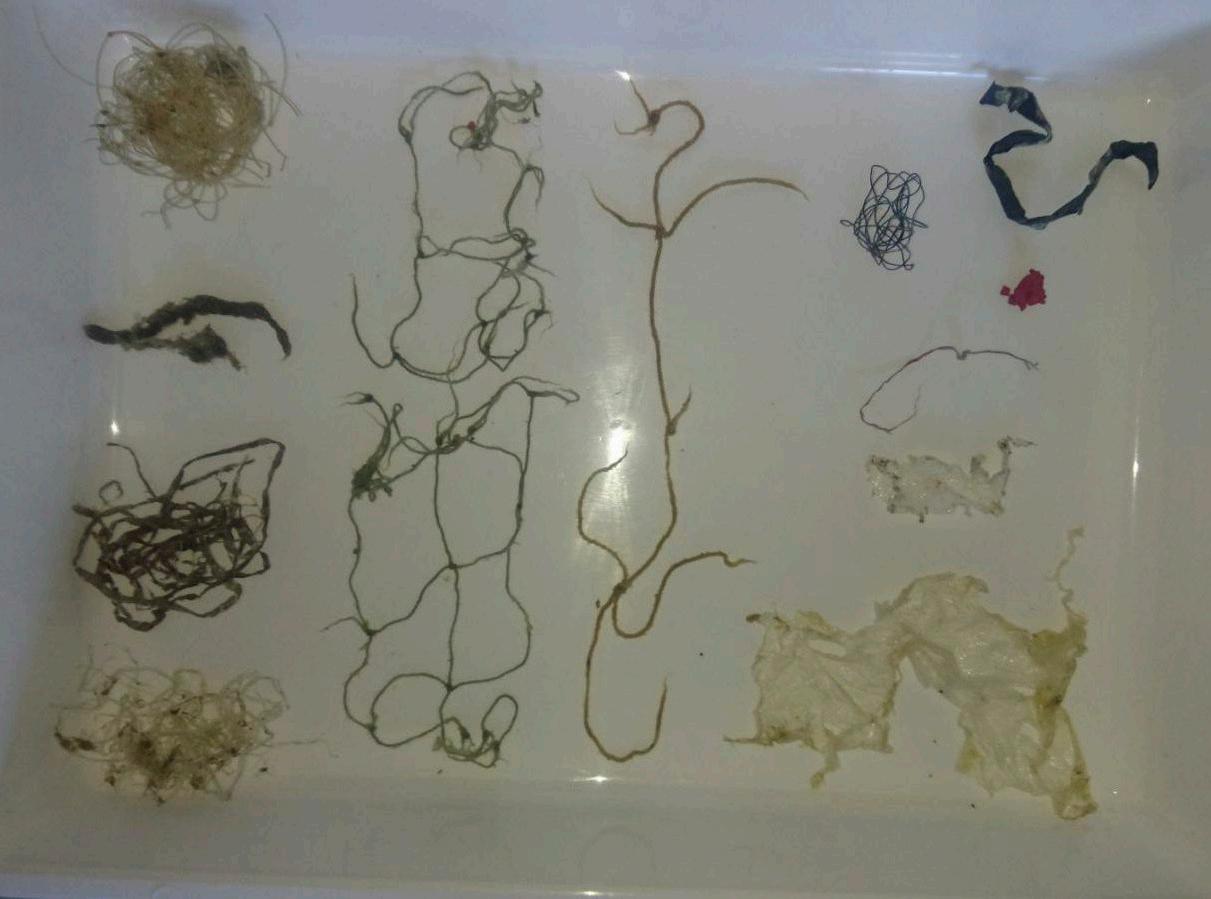
3 minute read
Alarming Amounts of Marine Debris Found in the Guts of Green Turtles
FEATURE FADI YAGHMOUR – SCIENTIFIC RESEARCHER (EPAA)

EPAA researchers responding to a stranded turtle.
Advertisement

Stranded green sea turtle.

Fish hook puncturing green sea turtle esophagus.
At first glance, it appears that plastics and other synthetic materials are primarily consumed by humans and only play a role on land. However, when imported into marine environments, these materials can spend the majority of their time interacting with marine species and environments in the form of marine debris. Marine debris is generally defined as any manufactured or processed solid waste product that is discarded, lost or abandoned into the marine environment. Plastics are the principal constituent of marine debris, but other types of marine debris include a wide variety of items ranging from fishing gear, soda cans, clothes, shipwrecks and even cheeseburgers that have been introduced to marine environments.
It was not so long ago when the threat of plastic marine debris to the marine environment was largely dismissed. Plastics were considered to make up a very small part of marine debris. It was also believed that the ocean was so vast that no real impact can be caused by marine debris beyond a minor aesthetic nuisance. As the old saying goes, “the solution to pollution is dilution”.
However, empirical data tells a different story. Bakelite, the earliest form of plastic, was first invented in 1907 by Leo Baekeland. Later, in the 1950s, the mass production of plastics had begun. Today, plastics constitute 80-90% of all marine debris. This is expected to increase with the increasing rate of plastic production, which is driven by both an increase in the number of consumers and consumer behaviour. As a result, it is projected that by the year 2050, the mass of plastic marine debris will outweigh all the fish in the world’s oceans. Once in the ocean, plastic marine debris can persist for several decades. One of the main ways marine animals are believed to be impacted by marine debris is through intentional or incidental ingestion.

Stranded green sea turtle.

Green turtle post-mortem.

Items found in the guts of individual green sea turtles.

Items found in the guts of individual green sea turtles.
In a recent study published in the Marine Pollution Bulletin, researchers from the Environment and Protected Areas Authority (EPAA) of Sharjah have investigated the prevalence and magnitude of marine debris ingested by green sea turtles from the Gulf of Oman Coast of Sharjah, UAE. In this study, dead green sea turtles were salvaged from the coast of Kalba and Khor Fakkan along two years (2016 and 2017). The results showed that approximately 86% of turtles had ingested marine debris, a much higher value than most similar studies from other regions. The quantities of debris ingested were also alarming with debris item numbers ranging from 1-189 items. Out of the items found, plastics made up approximately 90% of marine debris items and 75% of the mass of marine debris items. Overall, thread-like and sheetlike plastics of white and transparent colour made up the majority of items. It is difficult to speculate if this is driven as a result of any colour preferences by green sea turtles or if this is a reflection ofthe propor tions ofitems locally available to turtles. Items ingested included cloth fabrics, plastic ropes, cotton buds, plastic bags, fishing nets and fishing lines. Dangerous items such as fishing hooks and metallic gargoor fragments were also detected.
Overall, this study suggests that a high portion of green sea turtles on the Gulf of Oman coast of the UAE interact with large quantities of marine debris.This is the first study of this kind to be conducted anywhere in the GCC. However, in the late 1970’s, Dr. John Perran Ross investigated the diet component of green sea turtles in Oman and has not observed evidence of marine debris ingestion in any of his samples. This suggests that marine debris is a growing hazard to sea turtles in the region.
Green sea tur tles are only one offive species of sea turtles in the region and ingestion is but one of many potential harmful interactions with marine debris. Further research is needed to better understand the broader implications of rising levels of marine debris on marine turtles found here. Further work is also needed by the general public to reduce the amount of marine debris that enters the ocean. We can all make a difference by reducing the use of single-use plastics and other single-use items, reusing and recycling whenever possible, participating in beach and marine clean-ups and most importantly – NOT LITTERING!










